Parasite Screening
What it is:
• Non-invasive exam of feces to determine if animal has a parasite burden
• Fecal Egg Reduction count
o Assess the efficacy of deworming program
o Develop a strategic deworming protocol to reduce parasite resistance to common dewormers
Key Benefits:
• Deworm only when necessary
• Save time, money and
• Assess efficacy of current dewormer to decide if new protocol is needed or not.
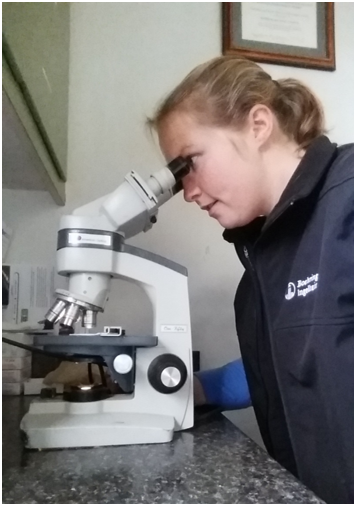
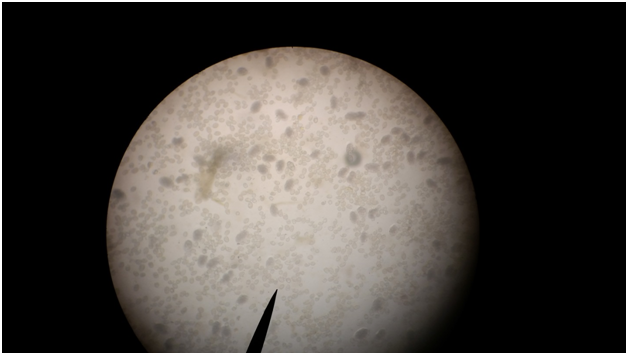
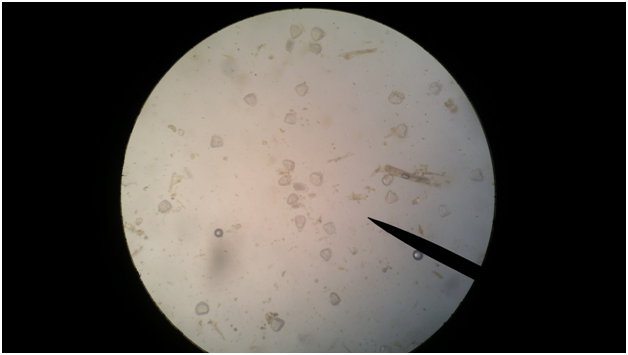
Vaccinations
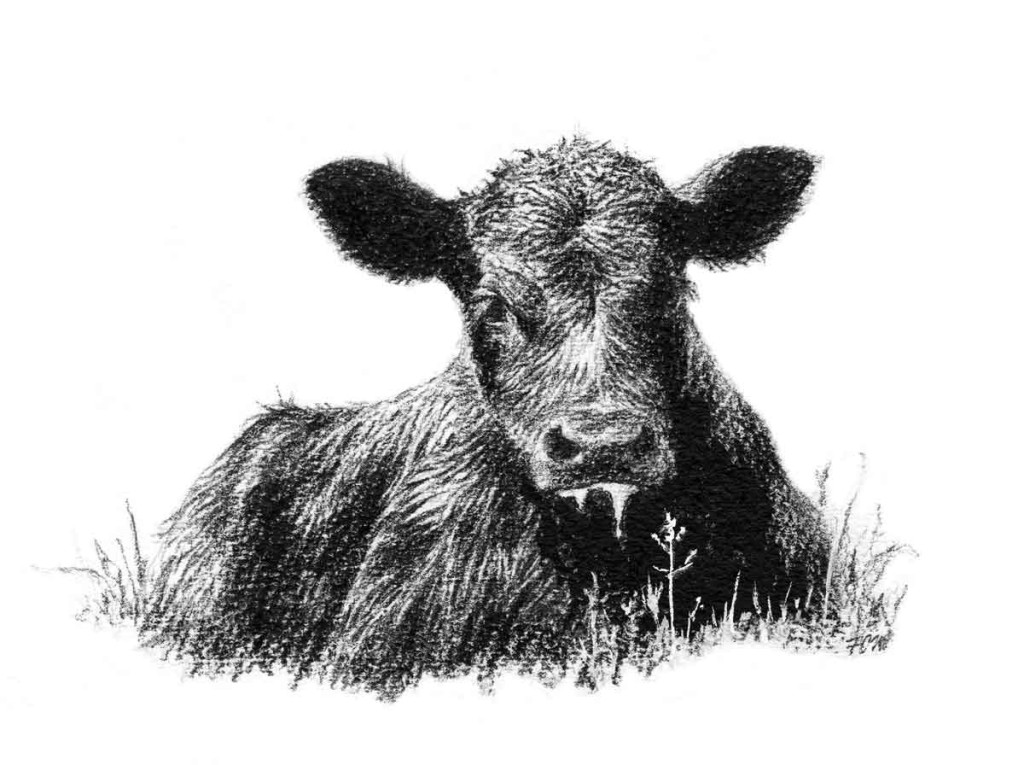
DAIRY CATTLE
Just Born Calf
- Alpha-7 SQ
- Inforce3 intranasal (Due to IBR don’t use this if selling bulls to Bull Studs ) – Use Bovishield gold BRSV intranasally instead)
- CalfGuard oral or intranasal
1 – 1.5 months
- Inforce3 Intranasal (or Bovishield Gold BRSV intranasally if selling bulls to bull studs)Remember to control Coccidia!!!!
5-6 Months
- Vaccinate for Brucellosis
- Bovishield gold 5 L5HB
- Oneshot
- Alpha-7 + – Pinkeye
Followed by a booster in a month of:
- Spirovac L5
- Maxiguard Pinkeye
- Remember to control Coccidia!!!!
6-13 Months, At 13 Months
- Bovi-Shield Gold 5 L5HB
- UltraChoice 7 or Ultrabac-7
- Maxiguard Pinkeye
- Deworm every 3 months with injectable Dectomax or Pour on product or Synanthic
- Remember to control Coccidia!!!!
Pregnant Heifers / Cows
- Vaccinate with E.Coli, Rota and Corona beginning 90 and 60 days prior to freshening – Scourguard 4(K)C (requires a booster vaccination if first time exposure)
- Inforce3 at freshening?
- Endovac-Bovi- 1st of 2 or J-5 this is 1st of 3
If you are using dairy bulls for service….
- Do a Breeding Soundness Exam!!!
- Bovishield Gold 5 L5 HB 1 month before use
- 4 cc Vibrin 1 month prior to use
- Spirovac L5 before turn out
- Do not use pyrethrins / permethrins on bulls or heifers in with bulls!
- Deworm if on Pasture
Beef Cattle
Heifer replacements (beef) 1 Year age
- Pelvic Measure! to reduce incidence of calving problems (dystocia)
- Deworm @ Pelvic Measurement (@ 12 Months)
- Bovishield Gold5 L5 HB @ Pelvic Measurement
- Pinkeye Vaccination
- Ultrabac-7 or Alpha-7 Check weights of heifers – want angus heifers > 675 lb at a year of age
Beef Replacement 1 month before breeding
- Bovishield gold5 BVD
- Spirovac L5
- Pinkeye Vaccination
- Flytags
Bulls: 2 Months prior to turn out
- Do a BSE exam – cheap insurance
- Bovishield Gold 5 L5 HB
- Vibrin 4 cc SQ
- Deworm
- Pinkeye Vaccinate
- Alpha-7 or Ultrabac-7
Bulls 1 month prior to use
- Booster Spirovac-L5
- Re-Do BSE’s that were not adequate
- Pinkeye Vaccine
Don’t use a pyrethrin / permethrin product on breeding bulls in the month prior to use- some research suggests a detriment to fertility – this includes ear tags and pour-ons
Cows – Bovishield Gold5 L5HB ** Don’t use Bovishield on pregnant cows unless this brand has been used on them prior to breeding – Read the label!!.
Spring Calving Routine
Calves at Birth – if tagging
- Inforce3 (Prevents respiratory disease caused by (BRSV) Bovine Respiratory Syncytial vius, and aids in the prevention of infectious
- bovine rhinotrachetis (IBR) virus and parainfluenza, (PI3) virus)
- Alpha-7
- Calf guard (I suggest intranasal rather than oral)
- Band Bull Calves (no tetanus needed at 1 day calf banding)
- ID Tags / EID
Calves Pre Breeding
- Inforce3
- Alpha-7 or Covexin 8 if using big bander
- Maxiguard Pinkeye or MB1 with Alpha-7
- Deworm calves w/ with Dectomax or Ivomec injectable
- Fly tags if used – I like Corathons
- ID tags/EID
- fImplant
Cows: Pre-Breeding
- Bovishield Gold 5 L5HB at pre-breeding (only on open cows!)
- Flytags (I like a single Corathon)
Cows Mid Summer
- Fly Control
- Change Out Corathon Tags
- Ultrasound cows
- Spirovac L5 or Leptoferm 5 Lepto Booster
Calves Mid Summer
- Deworm with Pour on or Oral – Synanthic or Valbazan
- Fly Control
- Inforce3
- Change out Corathon tags
Calves at Pre-Weaning
- Bovishield Gold 5
- Clostridial – Alpha-7 or Ultrachoice 7 or with OneShot Ultrachoice 7
- OneShot or Oneshot Ultra-7
- Deworm – Injectable Dectomax or Cydectin
- Band Bulls (Need Tetanus Bactrin for this age)
Calves at Weaning
- Pinkeye
- Bovishield Gold BVD
- Deworm with Synanthic or Valbazan
FALL CATTLE
Calves at Birth (Fall)
- Inforce 3 intranasal (Prevents respiratory disease caused by (BRSV) Bovine Respiratory Syncytial vius, and aids in the prevention of infectious bovine rhinotrachetis (IBR) virus and parainfluenza, (PI3) virus)
- Alpha 7 (Clostridium Chauvoei-Septicum-Novyi-Sordellii-Perfringens Types C & D Bacterin-Toxoid.)
- Calfguard (I suggest intranasal rather than oral)
- Band Calves
- ID Tags/EID
Calves – prebreeding
- Pour on Deworm for lice control
- Inforce 3
- Alpha-7 or Covexin 8 if using big bander
- Implant
Calves Mid – Late Winter
- Inforce 3
Calves (fall ) Pre-weaning
- One shot ultra7
- Bovishield Gold 5
- Pinkeye Vaccine (Maxiguard)
- Deworm with Synanthic or Valbazan or Injectable Dectomax
Cows Pre-Breeding (Fall Calvers)
- Bovishield Gold 5 L5HB
Cows Mid Winter (Fall Calvers)
- Ultrasound pregnancies
- Leptoferm 5
- Deworm with Dectomax or Generic Ivermectin for lice control
Cows Weaning (Fall Calvers)
- Maxiguard Pinkeye or Alpha-7 MB1
- Ultrachoice-7 if Alpha-7 not used
- Fly Control – I like Corathon tags 1 per cow
- Scourguard 4Kc
2 months prior to calving (Mid Summer)
- Scourguard4Kc Booster (if first time with product)
- Pouron Ivermectin as fly control
- Change out fly tag
Stocker Cattle
At Receiving
- Oneshot Ultra-7
- Inforce 3 intranasal
- Maxiguard Pinkeye
- Identify (Place just one)
- Deworm with Dectomax Pour-On or Synanthic
- Draxxin for Metaphylaxis
- Implant with synovex-S or H or Ralgro
- Fly Tags (Corathon)
- Mu -Se (Selenium & Vitamin E
- Bulls (Bar Vac CDT or Covexin 8)*
Booster in 3 – 6 Weeks
- Bovishield Gold 5
- Alpha-7 MB1 (for clostridial and Pinkeye)
- Place second ID tag
- Band Bulls
Johnes Disease prevention, control and eradication
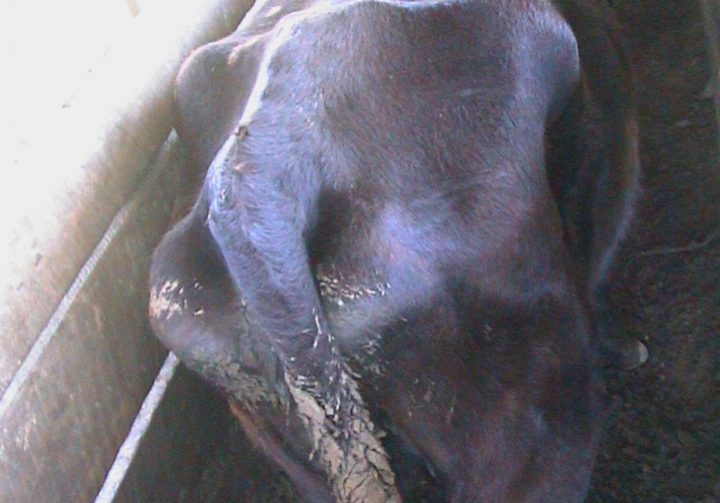
Paratuberculosis or Johnes disease is a chronic bacterial disease that can affect all ruminants. It is caused by Mycobacterium Avium ss. Paratuberculosis (MAP). The pathogen (MAP) does not affect humans unless they are severely immunosuppressed. No known clinical disease has occured in humans from MAP infection.
Johnes infected animals develop a granulomatous enteritis. (the small intestine becomes markedly thickened). The cow can eat but can not absorb nutrients efficiently. Also they begin leaking albumin (a blood protein) into the lumen of the bowel, thus loosing protein. Clinically the cow becomes thin and develops chronic, foul smelling diarrhea. She essentially starves with a full stomach.
MAP is a very slow growing organism that infects young cattle. Thus the disease that results from infection occurs in adult cattle that were exposed and infected as calves. As the calf matures, the ability to resist colonization and subsequent disease increases. After the bovine is 1.5 years of age the ability of the calf to become infected and develop clinical disease is negligible. This is a disease that is slow to develop.
Dairy cattle infected as calves often don’t develop clinical disease until they are three years of age or older. It is rare to see clinical disease in dairy cattle under 24 months of age.
Beef cattle often don’t show clinical disease until they are five to seven years of age. Occasionally a first calf heifer or two year old bull will develop clinical disease.
This is a bad disease to have in your herd. It robs you of the cattle’s potential
If your cattle have it, it can be managed and virtually eliminated.
Denial doesn’t make it better. Only worse.
Antibiotics are of little use with this disease.
Why is MAP enteritis called Johnes disease?
A Dr. H. A. Johne, a veterinary pathologist in Dresden Germany, found the organism in tissue samples submitted by a referring veterinarian. The cow in question presented with chronic weight loss, continuous diarrhea and agalactia. The bacteria found and the lesions suggested tuberculosis. The bacteria were found to not be tuberculosis, but a close relative which we now call Mycobacterium Avium ss. Paratuberculosis or MAP.
The Photomicrograph below shows a microscopic section of Small intestine from a cow euthanized because of clinical Johnes disease. The red things are Mycobacterium Avium ss Paratuberculosis. They are read due to a special dye that MAP organisms pick up and retain (Acid fast dye method). Note the number. They are within macrophages.
Diagnosis and diagnostics.
There is always a catch it seems. So here in 2012, one would think that performing diagnostics to find a disease agent would be relatively easy, easy to replicate and low cost. Well – in the world of Johnes disease, one would be wrong on all counts. At the present we have blood tests, fecal DNA probes, fecal bacterial culture and lymph node culture as our in vivo (live animal) testing methods. Lets look at these:
Blood testing:
Bovine ELISA test:
-Tissue – Serum – test detects antibody to MAP
Upside – a strong positive test is pretty much diagnostic to identify an animal truely infected with MAP. It is cheap and easily done from sample collection to lab testing.
Down Side – most MAP infected animals test negative on the ELISA until they are well into clinical disease. By this time they have been shedding billions of MAP organisms into the environment, potentially infecting other younger animals. So major problem is poor sensativity (many negatives might in fact be positives)
So it is a decent screening test especially if there are alot of positive dairy animals. ELISA doesn’t work so well with beef cattle due to lower shed levels and more prolonged interval from infection to clinical manifestation.
MAP PCR (Polymerase Chain Reaction) Test
Sample – fecal material – test detects MAP DNA in the manure
Upside – a much more sensative test for detection of MAP DNA than the ELISA. And it is fast. Turn around at labs can be 1 to 3 days. The age at which this test can discover positives is much lower than the ELISA. This is a good screening test for a purebred operation (which has zero tolerance to Johnes disease) or beef herds due to difficulties with false negatives with ELISA. The test can be run on pooled samples.
Downside – Low cycle positives are pretty easy to interpret. High cycle positives (say > 35 cycles to positivity) are tricky. Is the bacteria from a clinically affected or truelly infected cow or is it a non-pathogenic pass through in the cows GI tract via exposure to contaminated feed or water? Also the test requires sophisticated (expensive) lab equipment and trained technical people to run it. Cost is a major issue. This test costs @ 8 – 10x more than the ELISA test. There is still the problem of false negatives – especially in cattle less than 1.5 – 2 years of age.
MAP Culture
Sample – fecal material – test detects MAP bacteria in liquid culture
MAP is a slow growing organism that requires special conditions to grow. So a qualified lab using specialized equipment is necessary to undertake the task of culturing (growing) the MAP. The Positives are verified via PCR.
Upside – the gold standard (Best test) available for MAP detection in live cattle.
Downside – This is a slow test – 42 days till the sample can be called negative. The problem of false negatives in young animals persists. Pass through is not as much of an issue as it is with PCR. But still must be considered. Cost is still an issue here as with PCR. Bottom section is from a cow with active Johnes disease. She was exhibiting granulomatous Ileitis). Notice how thickened the ridges are. (Thanks to http://johnes.org)
The picture below shows Ileum (distal small intestine). Top is normal
Trace Mineral Screening
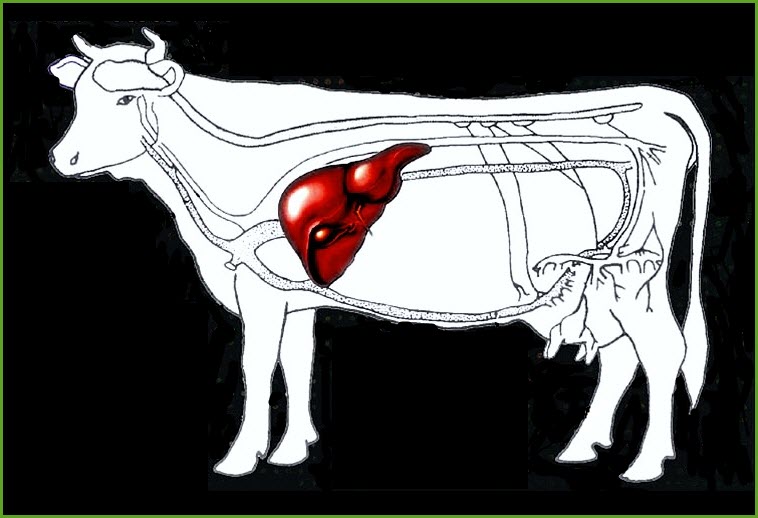
As a cattle owner, I know how expensive mineral is. I also know from hard experience how expensive poor performance is.
This is a service that can provide answers to questions such as:
- Is my mineral program yielding acceptable levels of absorbed trace nutrients?
- Am I overfeeding (or underfeeding) minerals?
- Could some disease problems I see in my cows be related to mineral nutrition?
- Could the availability of trace nutrients be affecting my herd reproductive performance?
To answer these questions on trace minerals, one has to obtain liver samples from live herd animals. No other tissue can give an accurate picture to trace mineral nutrition. Minerals such as Copper, Manganese, Selenium, Zinc, Molybdenum.
To obtain a liver speciman, Dr. Comyn will access the right thorax of the cow (bull) while she is in a squeeze chute. He prepares a spot over the third intercostal space from the last rib and inserts the tru-cut biopsy needle. The whole procedure takes between 2 and 10 minutes (depending on how the cow acts) and the cow is turned out. Samples are assayed at Michigan State University. Results are back in seven to fourteen days.
Dr. Comyn usually wants to sample 5 to 10 animals to try to obtain a representation of the population.
Liver biopsy doesn’t affect performance in the cattle sampled. No after care is required.
